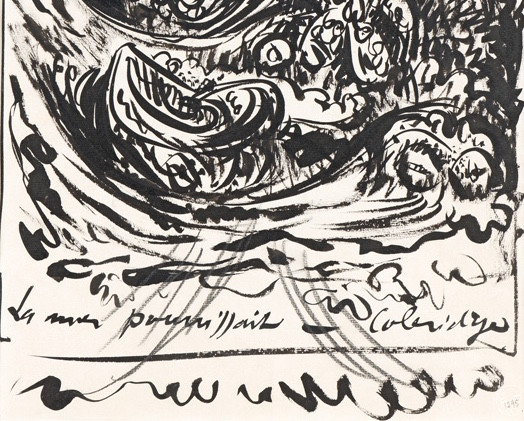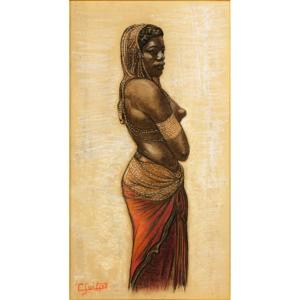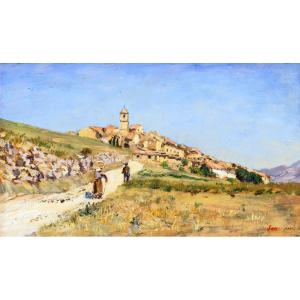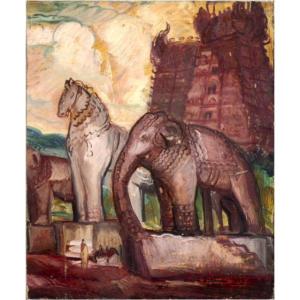Ink on paper, titled at the bottom.
48.4 x 31.6 cm.
Provenance:
Private collection, southern France
André Masson: From Surrealism to Abstract Expressionism, a Bridge of the 20th Century
Originally from the Oise region, André Masson discovered painting at a very young age before training in Brussels, then in Paris where he studied fresco painting and received a scholarship to Tuscany. The First World War disrupted his life: seriously wounded, he struggled to recover before truly beginning to paint during a stay near Martigues. In the 1920s, Masson lived between Céret and Paris, leading a bohemian existence before being supported by the Kahnweiler Gallery. His studio on Rue Blomet became a hub of the avant-garde, frequented by Artaud, Leiris, Miró, and Hemingway. He joined the Surrealist group in 1924 and experimented with automatic drawing, then created his first "sand paintings" in Sanary. In the late 1920s, he distanced himself from Surrealism, divorced, discovered Zen, and explored violence, notably through his experiences in slaughterhouses. The 1930s took him to the south of France, then to Spain where he drew inspiration from myths and bullfighting, before returning to France at the outbreak of war. World War II forced him into exile in the United States (1941-1945). Settling in Connecticut, he profoundly influenced young American artists, including Jackson Pollock. His painting became more calligraphic, nourished by telluric forces and Native American art. He definitively broke with Breton in 1943. After returning to France, Masson settled in Provence and then divided his time between Paris and the South. His "Asian period" flourished, as did his series inspired by the Provençal landscape and city life, notably "The Feminine." He received significant institutional recognition, designed the dome of the Odéon, and was the subject of numerous retrospectives. He stopped painting in the early 1980s and died in 1987. A major figure of the 20th century, Masson was a key player in Surrealism and a crucial link between the pre-war period and American Abstract Expressionism.
Discover more of this artist's work on the gallery's website: https://www.galeriepentcheff.fr/fr/peintre-andre-masson
































 Le Magazine de PROANTIC
Le Magazine de PROANTIC TRÉSORS Magazine
TRÉSORS Magazine Rivista Artiquariato
Rivista Artiquariato